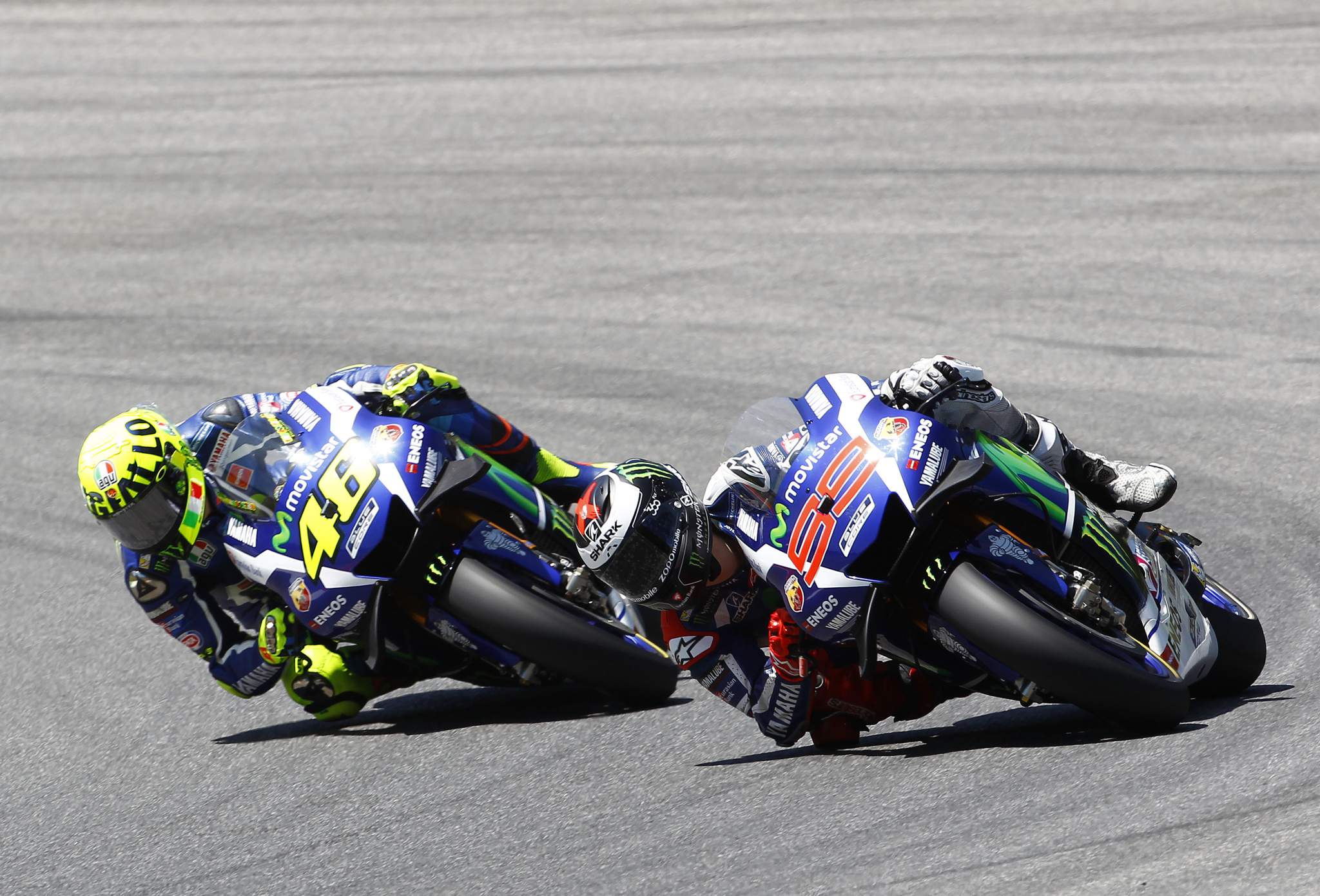Over the years, the Italian Grand Prix at Tuscany’s epic Mugello circuit has been seen as the traditional turf of one man and one man only: Valentino Rossi.
The undisputed king of his home race on and off the track, Rossi has seven straight wins there that lend significant credence to his status.
But there’s an argument to be made that, based not so much on wins but on the competition, there’s another rider who can challenge him for this mantle. And, to make things worse, it’s not just another rider – it’s his sometime arch-rival and former team-mate Jorge Lorenzo.

From 2002 until 2008, Rossi was unbeaten at Mugello, his seven-in-a-row win streak nothing short of incredible and a rare achievement at a single venue in world championship motorsport.
Even more impressively, most of those wins came by a big margin, with two or more seconds over names like Max Biaggi, Dani Pedrosa and Casey Stoner the norm.
Rossi managed it on two different brands of bikes as well, winning first on the Honda RC211V and then on the Yamaha M1 after his 2004 switch – with the change of machinery not enough to even come close to breaking his streak.

He was not the first Repsol Honda rider to consistently thrive at Mugello, though, with his predecessor Mick Doohan managing to pull off a similar feat in the 1990s. Winning consistently from 1994 to 1998, Doohan managed his own streak of five in a row, a decade before Rossi, to add to a previous victory in 1991 for a grand total of six.
And that, perhaps, is the similarity that tips the scales in favour of Lorenzo when you attempt to weigh up their achievements around the rollercoaster 3.259 miles of Tuscan asphalt.
Doohan and Rossi were the unequivocal masters of their respective decades. Given they were wholly unbeatable the majority of the time, it wasn’t unusual to see first Doohan and then Rossi go entire seasons where they barely missed the podium. On ultra-competitive machinery and lining up against grids that sometimes didn’t quite stand up to modern scrutiny for their depth, it wasn’t necessarily any easier – but it perhaps wasn’t quite as cutthroat as the modern era.

The timing of their win streaks hints at that too, with both achieving their Mugello runs during periods when they were also generally unbeatable in the championship and putting up similar numbers at other tracks. At some point, you have to ask: is it all about the symbiosis between rider and track, or does the talent they’re up against play a role too?
That’s what makes Lorenzo’s time as the latest master of Mugello look a little different. Stoner ended Rossi’s Mugello reign in 2009, and Rossi then broke his leg at the track at year later on a weekend when Pedrosa took the victory.
Lorenzo’s first Mugello triumph followed in 2011, and his subsequent achievements there arguably came at the height of the sport’s golden age of competitiveness.
Winning six times, from 2011 to 2013, then in 2015 and 2016 and then again in 2018, he did it at a time when he wasn’t the dominant rider on the grid, instead managing to take the fight to Marc Marquez (who won in the two years Lorenzo didn’t) at the height of his powers.

Four of those wins came in peak Jorge Lorenzo style, checking out at the front and setting beautifully consistent times lap after lap in a way that few riders are capable of doing. Not just winning but dominating, Lorenzo won four times with a gap to second place at well over five seconds – a bigger margin than any Rossi managed at Mugello.
But he also proved in 2016 that he wasn’t a one-trick pony either, scoring arguably one of the best results of his career in the sort of race that many assumed Lorenzo wasn’t capable of winning.
Taking the fight to Marquez and going completely hammer and tongs against the Honda rider, Lorenzo who used his considerable talent and experience to outfox his fellow Spaniard by a mere 0.01s at the chequered flag.

Let’s not forget he also matched Rossi’s two-manufacturer achievement as well, finally unlocking the key to his speed on Ducati machinery at Mugello in 2018 and taking his first win for the Italian brand.
With Lorenzo on to win two more races that season (including the next race at Barcelona only a week later), it could have been the start of something very special for the five-time world champion – if only he hadn’t just parted ways with Ducati for an ill-fated Repsol Honda switch of his own.
So who deserves the master of Mugello title more? Arguably the rider who won the Italian GP against some of the toughest opposition on earth – let’s not forget just how competitive 2016 in particular was – rather than the one whose incredible Mugello streak was just part of his wider era of dominance.
Not that that’s an answer that’ll please everyone, of course!



